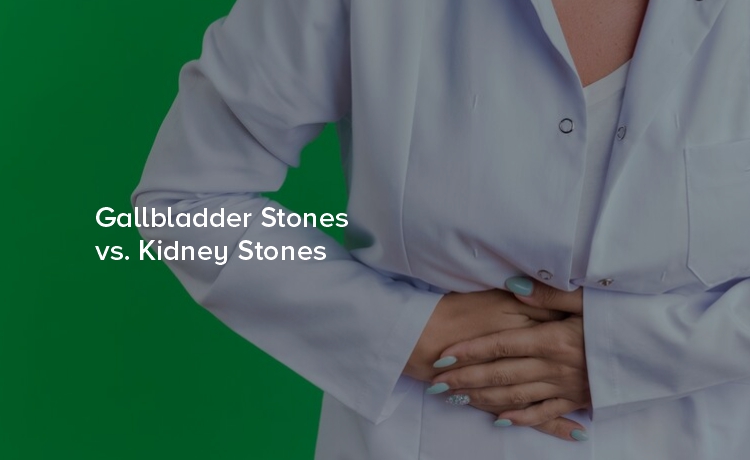
While you may be familiar with the term 'stones' as a painful and often debilitating health issue, distinguishing between the types of stones and understanding their implications can be the difference between effective management and unnecessary discomfort.
Gallbladder stones, also known as gallstones, are hardened deposits of digestive fluid that can form in your gallbladder. The gallbladder is a small, pear-shaped organ on the right side of your abdomen, just beneath your liver.
Kidney stones, on the other hand, are solid build-ups of minerals and salts that are present in the urine and form in the kidney. These stones can vary in size and can travel down to the urinary tract.
Causes of Gallbladder Stones
The primary cause of gallbladder stone formation is an imbalance in the substances that make up bile, a digestive fluid in your gallbladder. Cholesterol stones can occur when there's an excess of cholesterol or not enough bile salts, which help to break cholesterol down. Additionally, levels of bilirubin, a chemical produced when the liver processes red blood cells, can be elevated, contributing to pigment stones formed from bilirubin.
Symptoms of Gallbladder Stones
Gallbladder stones often remain asymptomatic but can lead to inflammation, a condition known as cholecystitis, causing severe pain in the upper abdomen, back, and right shoulder. Other symptoms include nausea, vomiting, and jaundice if the stone passes into a duct and blocks the flow of bile.
Treatment and Prevention for Gallbladder Stones
In cases where gallstones are symptomatic, treatment can range from medications that dissolve the stones to surgical removal of the gallbladder, known as a cholecystectomy. Preventative measures include eating a high-fiber diet rich in fruits and vegetables, maintaining a healthy weight, and avoiding rapid weight loss, which can contribute to stone formation.
Causes of Kidney Stones
Kidney stones form when the urine becomes too concentrated, causing minerals and salts to crystallize and form stones. Common types of kidney stones include calcium stones, which are the most frequent, and can form from oxalate, phosphate, or both; struvite stones, often caused by urinary tract infections; and uric acid stones, which may result from high levels of uric acid in the urine.
Symptoms of Kidney Stones
The hallmark of kidney stones is sudden, severe pain in the back or side that moves into the lower abdomen or groin. The pain, often described as excruciating, comes in waves and can fluctuate in intensity. Other symptoms include blood in the urine, frequent urination, and cloudy or odorous urine, among others.
Treatment and Prevention for Kidney Stones
The course of treatment for kidney stones depends on factors such as the size of the stone, its location, and the presence or absence of infection. Options range from medications to help manage pain and encourage stone passage to surgical procedures like laser lithotripsy, which uses laser to break up stones. Prevention focuses on staying hydrated, reducing dietary oxalates, and addressing underlying conditions that can lead to stone formation.
Etiology and Composition
Gallbladder stones are primarily composed of cholesterol or bilirubin, while kidney stones can be made of a variety of substances. The causes of both differ — with gallbladder stones being more associated with bile chemistry and kidney stones with urinary tract concentration of minerals and salts — but both can result from a combination of genetic, dietary, and environmental factors.
Symptoms and Pathology
While both types of stones can cause excruciating pain, the location of the pain is different. Gallbladder stone pain is typically located in the upper abdomen, back, and right shoulder, while kidney stone pain manifests in the back or side and then radiates to the lower abdomen and groin. Gallbladder stones can lead to cholecystitis and jaundice, while kidney stones can cause blood in the urine and increased frequency of urination.
Diagnostic Process and Imaging
The diagnostic process for both types of stones involves a detailed medical history and physical examination, urine tests to analyze for stone-forming substances, and imaging studies. Ultrasonography and computed tomography (CT) are the most common imaging modalities used to detect and diagnose gallbladder or kidney stones, providing critical information on size, location, and number of stones present.
Treatment Modalities
The approach to treatment for both conditions can include dietary changes, medication, and surgical intervention. For gallbladder stones, cholecystectomy is the most common surgical procedure, while for kidney stones, laser lithotripsy is often utilized to break the stones into smaller pieces that can be more easily passed.
Recovery and Lifestyle Modifications
Following the removal of gallbladder stones, individuals may need to adapt to a new diet, as the absence of a gallbladder can affect digestion and nutrient absorption. Immediate recovery may involve a period of restricted diet, gradually reintroducing foods to evaluate tolerance. For kidney stone removal, the focus is on hydration and maintaining a balanced diet to prevent future stone formation.
Long-term management is vital to prevent the recurrence of stones. This entails regular check-ups with a healthcare provider, adherence to prescribed dietary regimens or medications, and vigilant hydration to maintain the dilution of urine and decrease mineral concentration.
The experience of dealing with gallbladder or kidney stones can be psychologically taxing due to the associated pain, potential complications, and fear of recurrence. Support groups and mental health resources can be valuable assets in coping with the psychological toll of stone-related health issues.
Gallbladder stones and kidney stones represent complex health challenges that can significantly impact quality of life. Understanding the differences and similarities between these two types of stones is crucial for diagnosis, treatment, and prevention. By recognizing the distinct features of gallbladder stones and kidney stones and implementing appropriate management strategies, individuals can proactively address their stone-related health concerns and strive for a better, stone-free future.